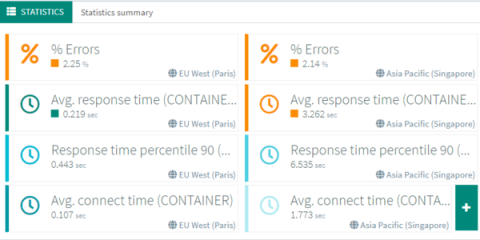Systems | Development | Analytics | API | Testing
Latest News
2019 Roundup
At the end of the year, I like to look back at what new discoveries I've made and lessons I've learnt as a QA engineer. 2019 has proved to be a bonanza year, with some startling changes in direction for Test and with new technologies and methodologies making a break into the mainstream.
Software Trends for 2020: Continuous Delivery
“Software is eating the world” is no longer a hopeful vision. It’s happening. It’s here. Software is driving the world’s most important technological trends, and 2020 will prove to be an inflection point for several of them. Underlying the rapid pace of software transformation is another trend that has become immensely popular in itself. The rise of continuous delivery has enabled software companies to turn their ideas into reality faster than ever before.
Is your BI software visionary?
It’s recently been announced that we've made the Gartner Magic Quadrant for the seventh time. What’s most exciting is that this year we're in the visionary quadrant. This means that Yellowfin is now recognized for being an innovator in the BI space. We bring products to market that other people follow and that have something different to offer customers of BI software.
Democratization of Data - It's More Than Just Turning On the Data Spigot
A pillar of 3rd-Generation BI, “Democratization of Data,” is the critical first step in maximizing the value of your BI solution. But, this means more than just simply opening up the information floodgates. That is not a formula for success. There are several important things to consider when democratizing data throughout your organization. I’ve outlined five of those key considerations below.
10 Best SEO Friendly WordPress Themes
Themes make the entirety of WordPress. You can’t find a WordPress site without an instance of theming applied. The most popular theme of all time, Avada, has made over 12 Million dollars from selling at the initial price of $60! We’re not here to throw some internet facts on you for fun (although these are worth your time!). We looked around for the best & rare WordPress themes that boost your SEO, and make our Lord Google happy.
Womply: Helping small businesses compete through API management
Editor's note: Today we hear from Brad Plothow and Mihir Sambhus from Womply, a software-as-a-service company that makes CRM, email marketing, and reputation management software for small businesses. The company recently developed APIs to help small businesses use data to gain a clearer picture of their markets—and how to compete in them.
OctoPerf 11.6 - Automatic SLAs and Other Quality of Life Features
In December, we updated OctoPerf to use the latest JMeter version. Although, as a minor version, it doesn’t bring a lot of new features, it is always better to stay up to date with the latest bugfixes. We had to implement a small change in OctoPerf because JMeter now properly enforces the cache control headers in every situation. To avoid any confusion, cache control headers have now been disabled by default in OctoPerf.
Infrastructure as Code without Infrastructure
Infrastructure as Code (IaC) is a powerful process – replacing manual, error prone and expensive operations with automated, consistent and quick provisioning of resources. In many cases, IaC is dependent on existing infrastructure, typically including a configuration management system. Chef, Puppet and SaltStack are all commonly referenced players in this market, each requiring resources to be in place and having their own difficulties in setup and maintenance.
Decoupling Ruby: Delegation vs Dependency Injection
We've all worked with tightly-coupled code. If a butterfly flaps its wings in China, the unit tests break. Maintaining a system like this is...unpleasant. In this article, Jonathan Miles dives into the origins of tight-coupling. He demonstrates how you can use dependency injection (DI) to decouple code. Then he introduces a novel decoupling technique based on delegation that can be useful when DI is not an option.











